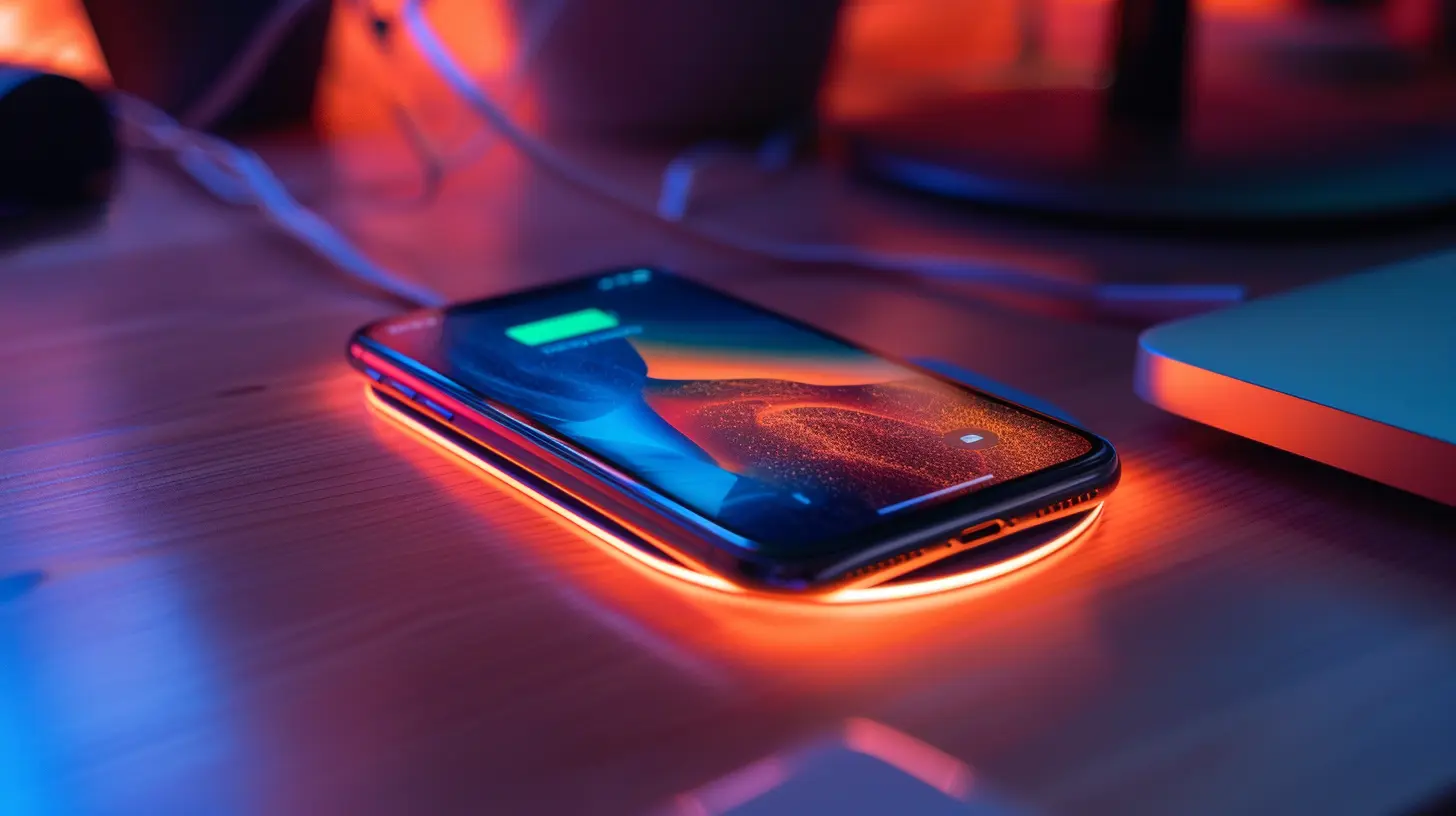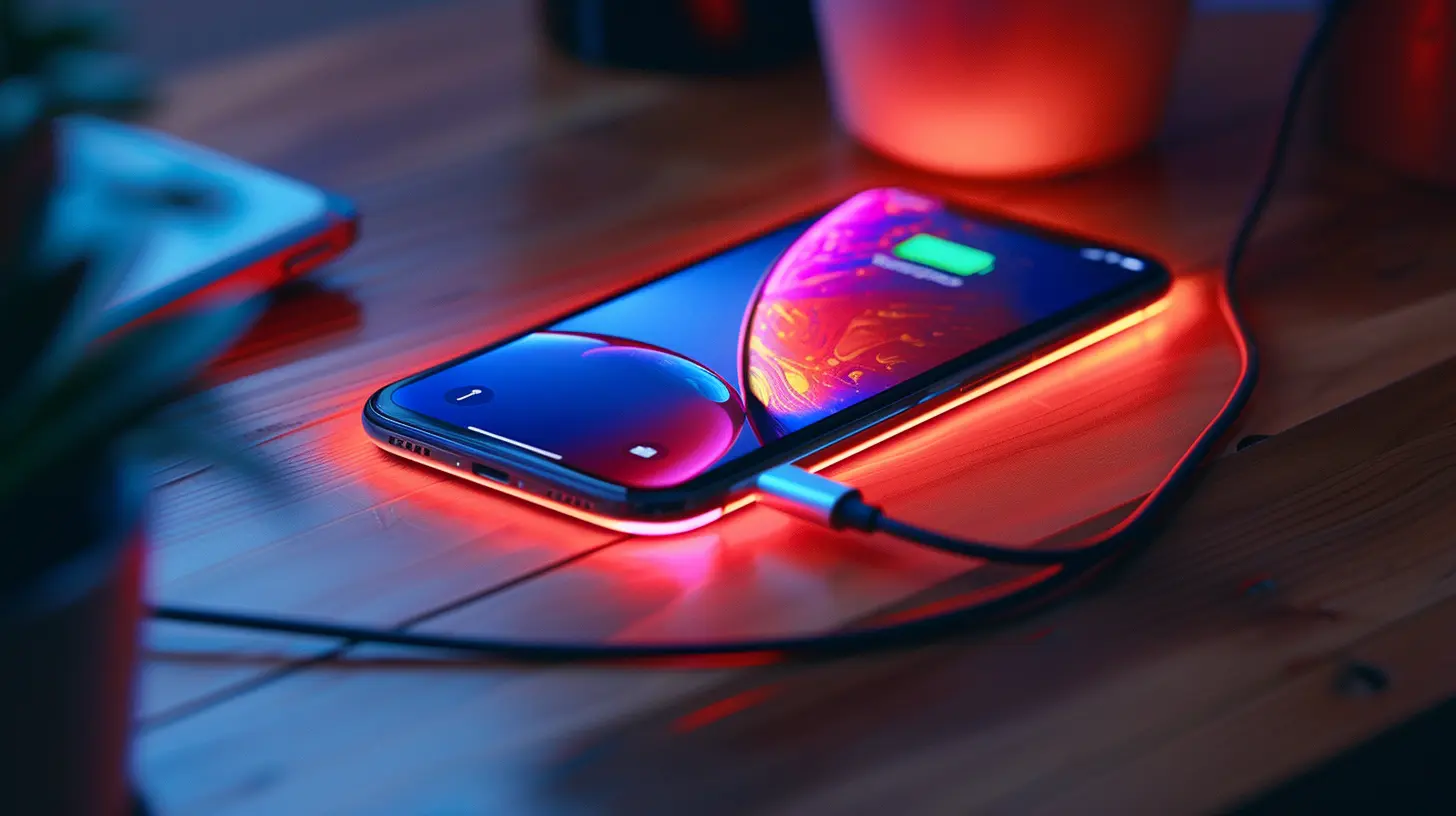Wireless Charging and Its Impact on Mobile Accessories
24 November 2025
Imagine a world where tangled cables and frantic charger hunts are things of the past. You're not digging through a drawer of spaghetti wires just to give your phone some juice. Welcome to the world of wireless charging — a techie dream turned everyday reality.
Wireless charging isn't some far-off, futuristic concept anymore. It's already changing the way we power up our devices, and guess what? It’s also shaking up the mobile accessory industry in some pretty wild ways. Whether you're a phone addict, a gadget lover, or just someone tired of frayed charging cables, this one's for you.
Let’s break it down.
What Is Wireless Charging, Anyway?
Alright, before we dive into the ripple effects, let’s clear up what wireless charging actually is.Wireless charging (technically called inductive charging) lets you charge your device without plugging it in. Instead, you just place it on a charging pad or stand. Inside that pad, there's a coil that creates an electromagnetic field. Your phone (or any device that supports wireless charging) also has a coil that receives energy from that field and transforms it into battery power. Magic? Not quite — just good ol’ science.
You know how you microwave food without touching it? Wireless charging is kinda like that — energy transfer without direct contact.
The Rise of Wireless Charging: From Gimmick to Must-Have
When wireless charging first showed up, it felt more like a party trick. Cool to show off, but not exactly practical. But times have changed, fast.Nowadays, wireless charging is everywhere — on desks, in cars, even built into furniture. Coffee shops and airports have them. Big smartphone players like Apple, Samsung, and Google have embraced it wholeheartedly. Heck, even toothbrushes have been charging wirelessly for years!
So yeah, it’s gone mainstream. And as more devices support it, the entire ecosystem of mobile accessories is evolving right along with it.
How Wireless Charging Is Changing the Mobile Accessory Landscape
Now to the juicy bit. How is this wire-free marvel shaking up the mobile accessory game? Oh, let us count the ways.1. The Decline of Traditional Charging Cables
Remember when buying a phone meant you’d also get (or buy) a few backup charging cables, maybe one for the car, another for your bag, and one for your nightstand? With wireless charging, that’s becoming less common.Sure, cables aren’t disappearing overnight, but they’re gradually taking a back seat. For people who live that minimalist life, fewer wires equals less clutter — and let’s be honest, who’s gonna miss untangling those suckers?
This shift also means:
- Fewer replacement cable sales
- Less demand for protective cable sleeves or organizers
- A decline in third-party cable manufacturers
In short: cable companies, take note. The wireless wave is coming.
2. The Rise of Wireless Charging Pads, Stands, and Stations
With the decline of cords comes the rise of wireless charging accessories.Charging pads and stands are now hot sellers. There are single-device pads, multi-device stations that charge your phone, smartwatch, and earbuds all at once, and even car mounts with built-in wireless charging.
Some of the coolest ones are embedded into bedside tables, desks, and even lamps. IKEA, for example, hopped on board early with furniture that's ready to charge your phone while you sleep or work.
And because people want them to look good too, there’s a booming market for stylish and functional designs — leather pads, wooden docks, sleek aluminum stands. Charging is now not just about energy; it's about aesthetics and convenience.
3. Big Push for MagSafe and Magnetic Accessories
When Apple rolled out MagSafe with the iPhone 12, it did more than offer secure wireless charging—it opened a whole new market for magnetic accessories.We’re talking:
- Magnetic wallets that snap onto your phone
- PopSockets designed to work with MagSafe
- Magnetic car mounts and desk stands
- MagSafe-compatible power banks
These accessories stick like Velcro but without the fuzz. They combine form and function, turning your phone into a modular gadget system.
So if you're a mobile accessory brand, adapting to MagSafe and similar systems isn’t optional — it's survival.
4. Battery Packs Are Getting a High-Tech Makeover
Portable battery packs used to be about plugging in and pushing through. With wireless charging, they’ve become smarter and sleeker.We now have power banks that charge wirelessly. You just plop your phone on top, and boom — charging starts, no cords needed. Some even magnetically attach to your phone and keep charging as you walk around.
For travelers, commuters, and anyone constantly on the go, this is a game-changer. And accessory makers are hustling to stay ahead of the trend.
5. Cases Must Now Work With Wireless Charging
Let’s talk about phone cases — those trusty protectors of our precious screens.Years ago, if you had a thick or rugged case, wireless charging was a no-go. It was like trying to microwave a steak wrapped in foil — not gonna happen.
But today’s cases are being redesigned to play nice with wireless charging tech. We’re seeing:
- Thinner materials that allow energy transfer
- MagSafe-compatible cases with built-in magnets
- Clear labeling on packages that say “Wireless Charging Compatible”
If a case doesn’t support wireless charging these days, it’s basically a dinosaur. Manufacturers have to adapt or risk getting left behind.
6. Cars Are Getting Wireless Charging Capabilities
Car accessories are getting a wireless upgrade too. Many modern vehicles now come with built-in wireless chargers, usually in the center console or dashboard area. You just hop in, throw your phone on the pad, and start driving while it charges.And for older cars? Aftermarket accessories are stepping in — dashboard mounts with wireless charging built-in, magnetic holders, and more.
The result? A decline in demand for traditional car chargers and USB ports, and a spike in wireless-compatible car accessories.
7. Cleaner, More Minimalist Workspaces
Wireless charging is also impacting how people set up their desks and nightstands. When there’s no need for dangling wires and charging bricks, you get cleaner, more organized spaces.That’s led to a boom in all-in-one charging stations, cable-free docks, and other aesthetically-pleasing accessories — say goodbye to cable clutter, hello to Instagram-worthy desks!
Challenges and Limitations (Yep, It's Not All Perfect)
Now, let’s not pretend wireless charging is flawless. Like any tech, it's got a few wrinkles:- Slower than wired charging (though fast wireless charging is improving)
- Can generate more heat, which isn’t great for battery health long term
- Positioning matters — if your phone isn’t perfectly aligned, it might not charge at all
- Expensive accessory upgrades, especially for quality brands
So while wireless charging is cool, it’s not replacing every cord just yet. But it's heading in that direction — and mobile accessories have to evolve whether they like it or not.
The Future of Wireless Charging (And What It Means for Accessories)
Here’s where things get really exciting.Tech companies are working on truly wireless, over-the-air charging. That means your phone could charge just by being in the room. No pads. No stands. Just air.
Sounds sci-fi? It's not as far off as you think. Startups like Energous and big players like Xiaomi and Samsung have demoed this tech. Once it goes mainstream, it'll completely transform accessories — maybe even eliminate the need for chargers altogether.
Imagine a world where you don’t need anything to charge your phone, and accessories shift focus completely to design, storage, security, and productivity. The mobile accessory game will have to reinvent itself from the ground up.
So, What Does This All Mean for You?
If you’re a tech user: Your charging experience just keeps getting smoother, faster, and cleaner — no more broken cables or midnight adapter hunts.If you’re a mobile accessory brand: You have to innovate. Think magnetic, minimalist, multi-functional, and wireless-compatible. The demand is shifting fast.
And if you’re just a fan of cool tech? Sit tight and get ready — the future's looking pretty wireless.
Final Thoughts
Wireless charging isn't just a convenience — it's a revolution. And like any revolution, it’s bringing serious change with it. From the death of old-school cables to the birth of smarter, sleeker accessories, the world of mobile tech is charging ahead (pun intended).One thing’s clear: If you want to keep up, you’d better lose the cord.
all images in this post were generated using AI tools
Category:
Wireless ChargingAuthor:

Vincent Hubbard

